Hooray, after a delay, the Falcon 9 rocket made it into orbit with the Dragon spaceship, with astronauts Bob Behnken and Doug Hurley, blasted off and arrived at the International Space Station (ISS)!
 |
| Hooray, Dragon crewed spacecraft liftoff! (Source: space.com) |
The Dragon spacecraft design has been used before to ferry supplies to/from the ISS, but this is the first time that it has had a crew of two astronauts and the first time for US astronauts to be launched by a commercial rocket from the US since the Space Shuttle launches.
Much has happened in spacecraft design since then and it shows up very well in this comparison photo from Benjamin Bratton. You can see older cockpit design used in the Shuttle and the new "touchscreen" design used in the Dragon. I was curious how well different hand control method would work when the pilots are in a high vibration environment, where when you are turning a switch and you have immediate tactile feedback, because you have a hold on the switch, and in this new method where you just have to touch and click a virtual switch. Hmm, it seemed to work ok and they didn't order 500 lbs of cat liter from Amazon by mistake!
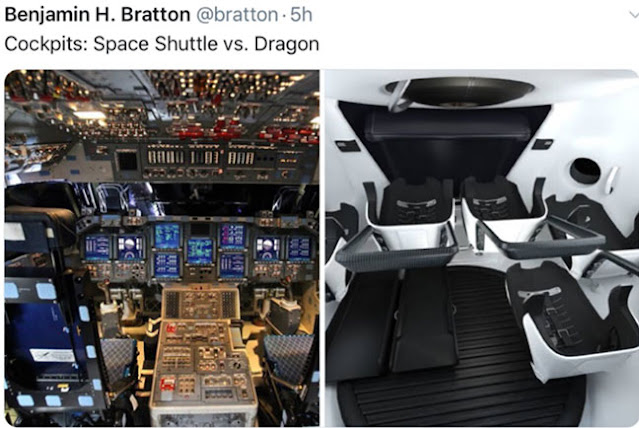 |
| Comparing cockpit control for Shuttle and Dragon (Source: Tweet from B. Bratton) |
After the launch, I wondered if we might be able to see the Dragon on its way to catch up with the ISS? This orbital display from Space.com seemed to show some paths over southern California, but it wasn't clear when or when these might occur. On further reading of the article, it seemed to say that the Dragon would best be seen from the northern US and Canada. So, based on this reading, I just assumed that we wouldn't be lucky enough to see the encounter this time. We have been lucky enough to track and photograph the ISS on previous occasions, but gave up this time.
 |
| The orbital path of Demo-2 Crew Dragon spacecraft (Source: space.com) |
Then, we receive an email from Orange County Astronomer (OCA) Tom Munnecke that he had spotted both the Dragon and ISS. He used a 15 second exposure and you can see the reflected light streaks from both the Dragon and ISS. He said the camera is looking towards Polaris. Way to go and thanks for that, Tom!
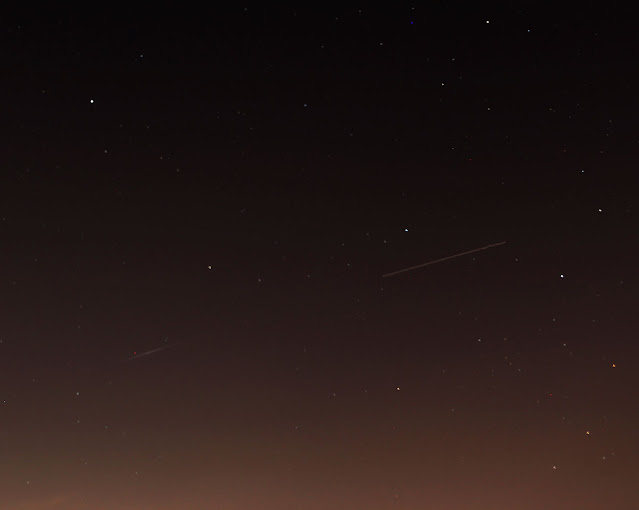 |
| Hey, the Dragon chasing the ISS was visible from SoCal! (Source: OCA Tom Munnecke) |
Ok, now the day after the launch we are anxiously waiting again for the Dragon to dock with the ISS. We learned that the Dragon crew had elected to name the spacecraft, Endeavor, after the Space Shuttle that both astronauts had flown before. The Shuttle Endeavor is now on display at the California Science Center.
So, in this photo from CNN you can see the spacecraft approaching the ISS and preparing to dock.
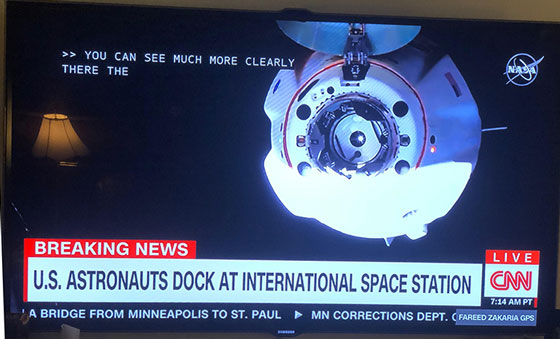 |
| Dragon spacecraft approaches ISS (Source: www.cnn.com) |
The docking procedure has a soft docking portion, where the two spacecrafts get lined up with docking parts touching but not locked. The hard docking portion begins than and ends when both spacecraft are physically locked together and an airtight seal is established between the two crafts. In this photo from C-SPAN you get a look at the Dragon as seen from aboard the ISS.
 |
| View of Dragon spacecraft Endeavor outside of ISS (Source: C-Span) |
Ok, now that the Dragon is docked, and that anxious period is over, we now find we have to wait several more hours as various pressure equalization procedures and housekeeping procedures are completed. In addition, the ISS crew has to prepare the entry to the ISS with cameras and microphones for the publicity event when the two Dragon astronauts enter the ISS. From this view you can see one of the hatches, at the far end of the ISS, which connects to the docking adapter tunnel. There are two additional hatches after this one, one at the other end of the docking adapter and one at the Dragon capsule itself.
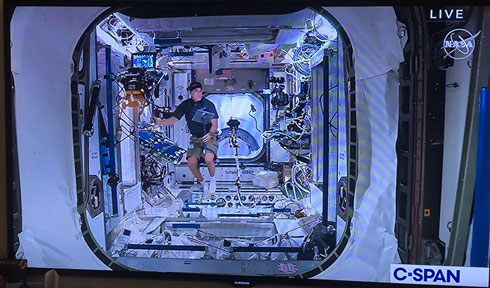 | |
|
Hooray, all hatches are finally open and the Dragon crew can float through the docking adapter and into the ISS. Here everyone exchanges hugs and then gets ready for the press conference. Whew, finally, the dangerous ride to the ISS is over and the really dangerous press conference is where a bunch of engineers get asked how they are feeling. Hmm, that seemed to go ok (except for one of the astronauts who bumped his head on the way through the tunnel)! Anyway congratulations all around for all of the teams that made this a success!
 | ||
|
In separate space news, we received some video showing testing of SpaceX Starship SN4 at Boca Chica. SpaceX followers suspected the test hop of SN4 was immanent, but because of the pandemic we were not going to be able to fly down there again. In this photo you can see ongoing fueling or venting operations in preparation for some sort of test.
 |
| Starship SN4 undergoing more testing (Source: @Teslarati and @BocaChicaGal) |
Unfortunately, something went wrong during the test and the entire SN4 blew up on the launch pad. The video associated with this tweet showed the explosion and then 5-6 seconds later we hear the sound, so the observers are over a mile away from the launch site. Darn! That is too bad, but we know that Elon expects setbacks, from which much learning occurs, and the next test article, SN5, is nearing completion and ready to continue on with the testing.
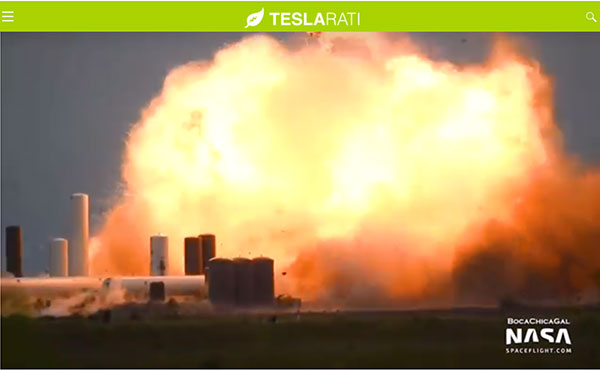 | |
|
Until next time, here from our burrow, stay safe, but it's time to recover more of our freedom,
Resident Astronomer George
Be sure to check out over 400 other blog posts on similar topics
If you are interested in things astronomical or in astrophysics and cosmology
Check out this blog at www.palmiaobservatory.com

No comments:
Post a Comment